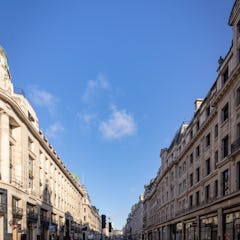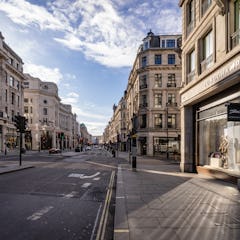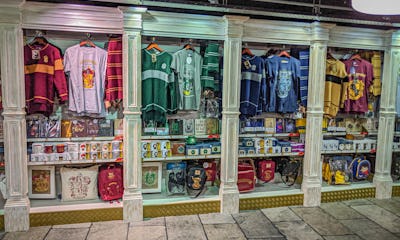History of Regent Street
Regent Street blends historic architecture with modern retail and has been a symbol of London’s shopping culture for over 200 years.
The street was commissioned by the Prince Regent (later King George IV), who appointed architect John Nash to redesign central London. Nash envisioned a grand, curving boulevard lined with elegant neoclassical buildings that reflected the prestige of the Georgian era.
Built between 1811 and 1825, Regent Street became one of the world’s first purpose-built shopping streets. With its luxurious boutiques, department stores and impressive façades, it quickly became a fashionable destination for London’s elite.
Today’s unified architectural style originates from the Regent Street Improvement Scheme in the early 1900s, when many of the original buildings were rebuilt in Portland stone, which still defines the area’s visual identity.
Regent Street Today
Regent Street is now one of London’s busiest and most polished retail destinations. Pedestrian-friendly zones, improved greenery, and restored historical buildings create a relaxed, inviting atmosphere.
The area regularly hosts seasonal events, fashion installations, public art, and summer activities. The most well-known event is the annual Christmas lights.
Fashion on Regent Street
Regent Street is a major fashion hub where British heritage brands stand alongside international labels such as Boss, Gant, Tommy Hilfiger and Tory Burch.
Here are the key British fashion houses closely associated with the street:
Burberry (1856)
Founded by Thomas Burberry, the brand is known for its iconic trench coats, gabardine fabric and a growing focus on sustainable materials.
Mulberry (1971)
A luxury brand founded by Roger Saul. Its leather bags are still handcrafted in England, combining traditional techniques with modern design.
Barbour (1894)
Specialising in waxed jackets and durable outerwear, Barbour remains a staple of British countryside style.
Hackett London (1979)
Founded by Jeremy Hackett, offering refined menswear with modern tailoring.
Church’s (1873)
Renowned for handcrafted Northampton-made leather shoes using time-honoured techniques.
Helen Anthony (2015)
A contemporary brand bringing Savile Row craftsmanship into the modern era with bold cuts and colours.
Watches & Jewellery on Regent Street
Regent Street is a destination for luxury watches, combining British heritage and Swiss precision.
- Mappin & Webb (1775) – Royal warrant holder and renowned British jeweller
- Watches of Switzerland (1924) – Leading retailer offering Rolex, Patek Philippe and more
- Omega (1848) – Known for its NASA space history and Olympic timekeeping
- Breitling (1884) – Aviation-linked brand known for technical chronographs
Perfume & Beauty Boutiques
Regent Street features several prestigious perfume houses and beauty brands:
- Creed (1760) – Fragrance house behind scents like Aventus
- Penhaligon’s (1870) – British perfumery with heritage classics
- Molton Brown (1971) – UK-made products with eco-friendly formulas
- Jo Malone London (1990) – Known for blendable fragrance combinations
- Innovation by Space NK (1993) – Showcasing rising beauty brands such as The Ordinary
If you’d like to explore London’s best perfumeries in more detail, you can read more here.
Hamleys – One of the World’s Most Famous Toy Stores
Founded in 1760, Hamleys on Regent Street is one of the world’s most recognisable toy shops. Its multi-storey flagship offers toys, games, beloved brands and interactive demonstrations, including dance performances and live product showcases.
Dining on Regent Street
Regent Street offers restaurants for every taste, from classic British dining to global flavours.
- Veeraswamy – One of Britain’s oldest Indian restaurants
- Café Royal Grill – British cuisine in the historic Hotel Café Royal
- Aqua Nueva – Contemporary Spanish dishes with a rooftop terrace
- Aqua Kyoto – Modern Japanese cuisine in an elegant setting
Regent Street Christmas Lights
Regent Street is world-famous for its “Spirit of Christmas” lights, which have illuminated the street since 1954. The angel-themed displays, created using energy-efficient LEDs, have become one of London’s most beloved winter attractions.
Hotel on Regent Street – Hotel Café Royal
Hotel Café Royal (1865) is the only hotel located directly on Regent Street. Known for its historic interiors and cultural heritage, it offers luxurious rooms, fine dining, bars and wellness experiences in an iconic setting.












